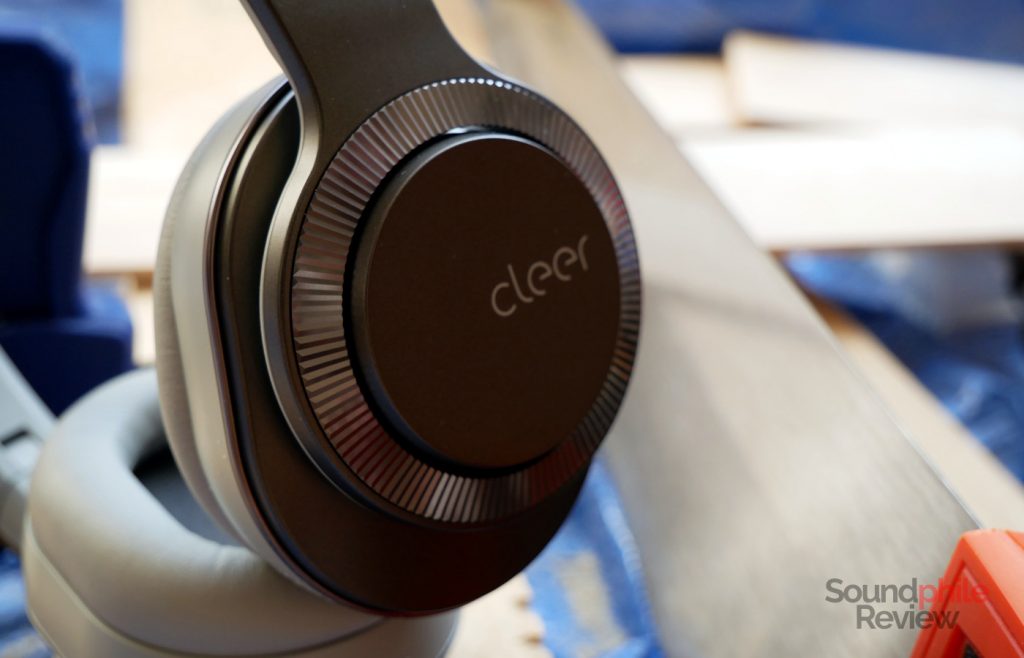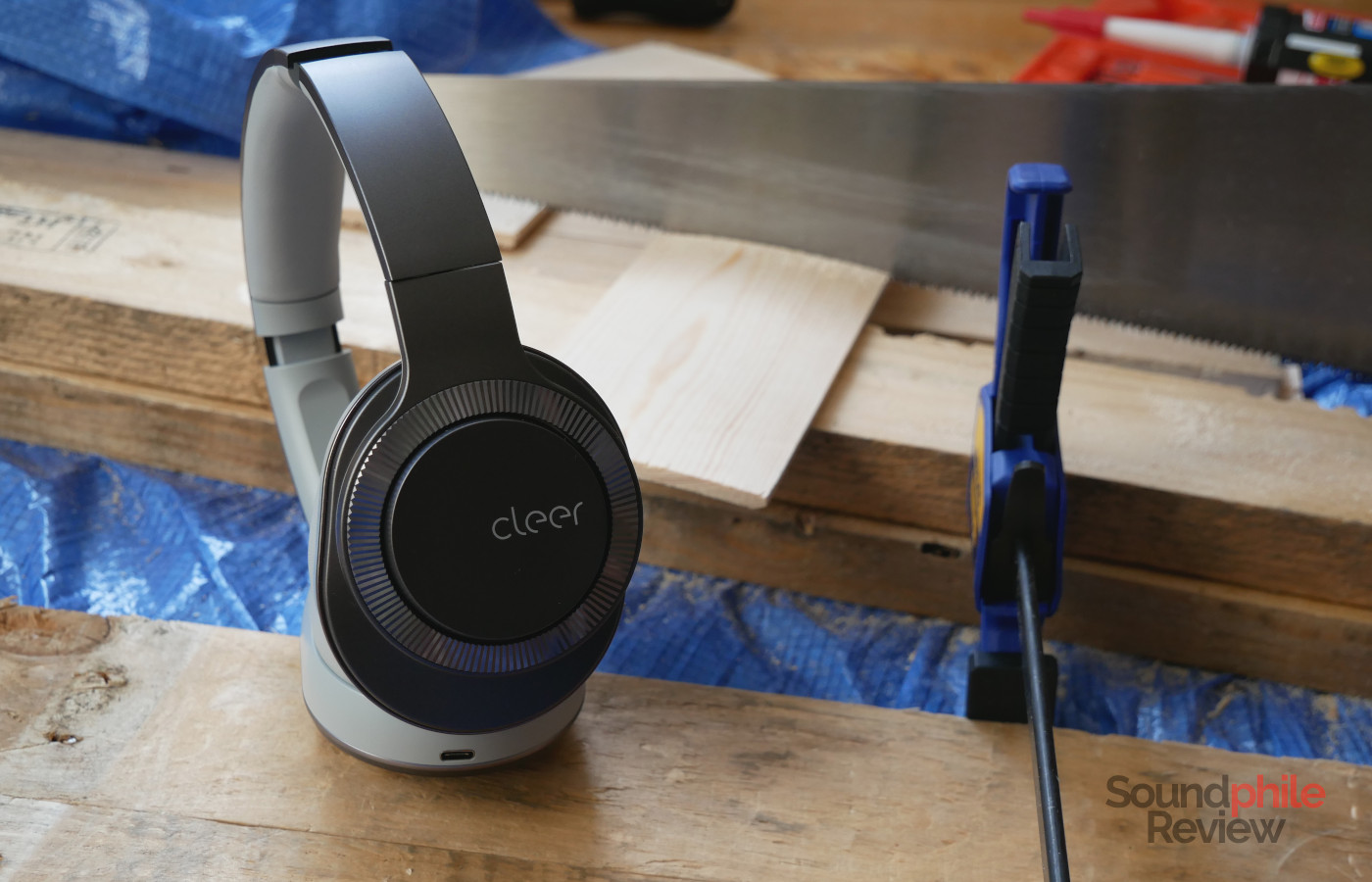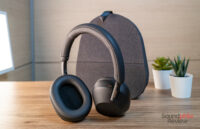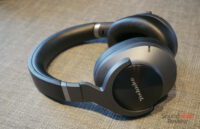Bluetooth headphones with active noise cancelling (also known as ANC) are all the rage right now and multiple brands have launched their version. The market is close to being saturated… but the thing is that there’s still lots of space for headphones with a more affordable price tags than the big-name models. Here’s where the Cleer Flow II enter the stage: they offer a very competent package that has a definitely competitive price.
Now, you know that headphones are good when your significant other who is not into the hobby keeps on stealing them and using them daily. In fact this review of the Cleer Flow II is my first ever collaboration with my girlfriend, who asked me if I had any noise-cancelling headphones (forgetting I gave her the Plantronics BackBeat Pro 2) and then decided she would be the only one allowed to use them. It got to the point she asked me “why were the headphones on your desk?”. This is just to give you a reference frame of how things worked for this review, writing which turned out to be more fun than expected for more than a reason. Because of the fact she liked the headphones so much, I invited her to provide some comments which you will find scattered across the review!
Disclaimer: I received this unit free of charge from John at KS Distribution (thanks!). They sell the Flow II on HiFiHeadphones for £180. Additional info is available on the official website.
TL;DR: recap
| Pros |
Cons |
| + Very comfortable
+ Super-effective ANC + Long battery life + Balanced, likeable sound |
– Some creaking
– Touch controls are not reliable |
Rating: 8.8/10
Packaging & Accessories

Considering the (relatively speaking) affordable price of these headphones, the amount of accessories you get with them is ludicrous. The headphones come in a hard travel case, where they fit once folded. That case also holds a USB-A to USB-C cable, a cable with 3.5 mm jacks at both ends and an aeroplane adapter. There is also a manual with instructions on how to use the headphones. The case is really well made and has an internal pocket where you can store the cables and other stuff. The quantity and quality of accessories is beyond what I expected out of headphones in this price range.
Design & Comfort

There is a clear trend in the design of Bluetooth, noise-cancelling headphones as of late – basically all headphones are similar to the Sony WM-1000X line, one way or another. The Cleer Flow II do remind me of those headphones in some ways, but they are original enough to be their own thing as a whole. The earcups have a swivelling mechanism that connects them to the headband, which can fold to reduce the overall footprint of the headphones. The earcups are slightly rotated backwards, so that they follow the shape of the ears better (and this does indeed work). The headband has a machined-like ring around the circle where it connects with the earcups – something that gives them quite a different look compared to most competitors. My girlfriend says they have a “discreet elegance”, a statement I fully agree with.
All the buttons reside on the left hand side earcup: there’s the power button, one dedicated to the Google Assistant and the third to switch between the ANC mode and the ambient sound mode. The right hand side earcup has an NFC chip embedded in it to allow for quick pairing.

Build quality is fairly good and although I can hear some creaking when I put them on, there’s no other sound whatsoever when I am wearing them. They are made primarily of plastic, but the frame actually has a metal skeleton which gives them a certain strength.

As you probably know if you read these pages often, my scalp and I aren’t exactly friends. It is the rather sensitive type, so it gets offended the moment I lay anything on top of it and then plays the “I’m quite irritated” part for some time. It’s a complicated relation. But with the Flow II I’ve found a good balance, with the headband offering good comfort despite my scalp’s sensitivity. I can wear the headphones for a few hours before they start bothering me, and that means people with more normal scalps can easily wear them for an entire day. In fact my girlfriend says these are the most comfortable headphones she’s ever tried (granted, she hasn’t tried a lot, but it’s still quite meaningful), adding “I only take them off because you need them”.
Passive isolation is decent, but not exceptional: you will still hear noise coming from outside if you use them passively (as in, without turning them on). This also means that the ANC won’t be able to remove all sounds, despite doing a marvellous job, as those sounds it can’t remove won’t be stopped by the passive isolation either.
Extra Features & Battery Life

There is a wide array of codecs available on the Cleer Flow II: they feature SBC, AAC, aptX HD and LDAC, which makes them compatible with just about any device out there. The presence of LDAC is especially great, as it allows you to listen to music in high quality. The only flaw in this nearly-flawless set of features is the use of Bluetooth 4.2 instead of the newer 5.0 version: there is no difference in terms of quality, but the latter revision features low-lag transmission with SBC, which really helps with movies and games. It’s not a major drawback, of course, it’s more of a missed opportunity.
They are quite great in terms of range: my absolutely scientific test for Bluetooth range (AKA “walk from the study to the kitchen”) says that I can walk freely without interruptions, save for the farthest spots. That’s quite impressive and with devices having better Bluetooth signal than my laptop, you should have no problems whatsoever.
The Cleer Flow II offer touch-based controls on the cup on the left hand side: you can control volume by sliding your finger up or down and skip to the previous or next track by moving the finger forward or backwards. Play and pause are controlled with a double tap on either earcup. The system is quite intuitive, but I never found it to work reliably. In most cases, let’s say 8 out of 10, the headphones would not recognise my gestures at all, not even the simple taps. I found it is noticeably more reliable when I use two fingers.

There seems to be a sensor to pause music when you take the headphones off and to play it again once you put them back on, but I wasn’t able to make it work reliably. It might be because I wear glasses or because of something else entirely, but it happened to me that I had to take a phone call and so I took my headphones off; then right at the end, after half an hour, when I put the headphones back on they finally decided it was right to pause the playback. Quite a weird timing!
The main ingredient of the Flow II is, however, the noise cancelling feature. And let me tell you it’s astoundingly good. Hadn’t I known these earphones were less than $200, I would have guessed they were up there with the market leaders that cost $350+. I put the Cleer Flow II on and the rest of the world just disappears, it’s just me and my music. No more traffic noise, no more sounds from the house, nothing. It’s just quiet and silent. And this really helps when I want to concentrate and exclude everything else, or just when I wish not to hear the cars passing in one of Glasgow’s busiest streets. The ANC feature is so good it can even make sirens quite a bit more bearable, although it can’t exclude them entirely – still, the difference is sizeable and my ears are thankful for that.
It’s a hybrid ANC implementation like the one featured on Bose and Sony headphones: a microphone picks up noise from outside the headphones and one picks up noise from inside, then complex functions take that information and play a sound which is the inverted sine wave of the noise captured. Basically, you can think of it this way: if the noise has positive magnitude, the chips in the headphones create a sound that has negative magnitude so that the sum is zero. And the final result is effectively silence.
The one thing I am not sure I 100% like is that the ANC feature cannot be disabled without turning on the “ambient sound” mode, which captures sounds around you with the microphone and plays them back. There’s no “simple Bluetooth headphones” mode, so it’s either “you don’t hear anything from your surroundings” or “you hear better than if you were not wearing the headphones”. If you want to use the headphones as is, you can only do so by turning them off and using them with a cable.
The Flow II feature an integration with the Google Assistant, which you can bring up by pressing the dedicated button on the left earcup. As I cannot use the Google Assistant due to my privacy settings with Google, I did not test this feature.
The microphone does a great job at capturing the voice, so much so that people I talked to did not even realise I was wearing headphones. My voice sounded clear and clean to them.
Battery life is quite impressive and the 20 hours the manufacturer states are quite close to reality: as I am writing this paragraph I have been using the headphones for three days in a row for multiple hours a day and they are still holding up quite well.
Sound & Specs
I mostly tested the Cleer Flow II using my HP EliteBook 745 G5 notebook PC, loaded with FLAC files (mostly CD quality). My girlfriend used her Surface Book 2, loaded with whatever music she could find.
Cleer Flow II |
| Frequency response | 20 – 40,000 Hz |
| Impedance | N/A |
| Sensitivity | N/A |
| Bluetooth version | 4.2 |
| Codecs | SBC, AAC, aptX HD, LDAC |
The Cleer Flow II use a 40 mm driver with the so-called “Ironless” technology, which means that the magnets used do not contain iron. The main advantage brought about by that that I can think of is the lower weight.
Soundstage is relatively wide, with a lateral extension that feels like it extends beyond my ears and into the space beside me; depth, on the other hand, is not as good and this leaves me with the impression that sound is 2D, as if it was produced by a wall in front of me. Imaging is limited, with a good placement of instruments in terms of giving them their own spot, but it also offers little channel separation. Instruments are clearly distinguishable even in complex tracks.
Bass is slightly emphasised, with the most emphasis going to the mid-bass area. It has decent depth, as it reaches 40 Hz easily and then slowly drops down below that mark, with an overall very decently balanced response. What I really like is that bass is very well controlled, so it never steps in front of the midrange even when the track naturally contains a lot of it (e.g. Massive Attack’s Pray for Rain). On top of that, it’s also unexpectedly fast, with convincing drum hits that convey the right sense of impact. There’s a very good amount of detail and a great sense of layering.
Midrange is slightly tilted towards the upper region, possibly due to the influence of the emphasised treble. As a result, it is slightly bright and exhibits some sibilance, but it generally doesn’t alter the way tracks sound: female voices are somewhat emphasised, but male voices still have the necessary body to make them sound full. Midrange sits mostly in line with bass, trading blows in deciding which is ahead of the other; in general they’re almost equivalent, with bass having a slight edge. I really like the speed of mids, as it makes drums quite convincing. There’s also a great amount of details as well, which pops out with tracks such as Babel (from the same Massive Attack album, Heligoland).
There’s definitely a good emphasis on treble, which emerges clearly as the most emphasised region in the sound signature. It sounds quite energetic and rich, with an extension that gifts the sound as a whole a certain openness and airiness. What I especially like is detail: it is presented with real clarity, so it’s always easy to hear it independently of the complexity of the track. There’s some emphasis in the lower area and then in the upmost area, but it’s not so large as to become fatiguing or harsh.
My girlfriend’s comment is: “I think they sound very good, even though I am not an expert. The lows are especially good for me since I’m short” (this joke works so much better in Italian, as “lows” and “short” are the same word, but you get the gist of it).
One last note: the ANC feature does not seem to alter the sound signature in any significant way.
Cleer Flow II Comparisons
The only ANC headphones I have are the Plantronics BackBeat Pro II, a model which is currently at the end of its life after about four years. I will update this review as soon as I have a competing model available.
Final Thoughts
The Cleer Flow II are quite a revelation to me. An audiophile-grade Bluetooth headphone, filled with useful features and high-quality codecs, with superbly implemented noise cancelling and a very likeable sound signature? It’s almost like a dream come true! In fact, the Cleer Flow II tick practically all of the boxes. The only issues with them are minor and very much not in the way of letting you enjoy a high-quality listening experience.
What I find most interesting about the Cleer Flow II is that their ANC feature is extremely well made and comparable to much more expensive units, but this doesn’t come at the expense of other features. However incredible this might seem, the Flow II are great Bluetooth headphones all around that are a joy to use. They get a praise and a heartfelt recommendation from me.








